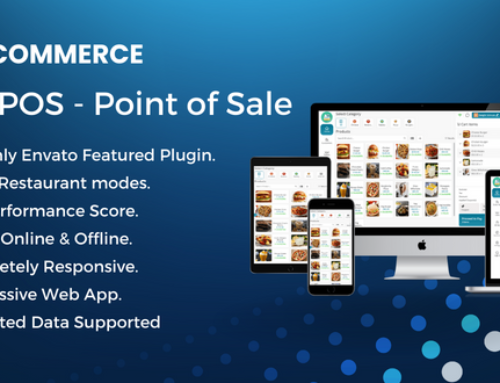Helpdesk Support System
This customer care system, which was developed on Laravel, is an excellent solution for efficiently handling and resolving any concerns that may arise with one’s clientele. It provides a comprehensive approach to support and ticket management, enabling you to track and respond to client requests according to the precise issue type, priority, and category for which the request was made. You can assure that your clients will receive prompt response by adopting this support desk, which will also allow you to keep a systematic record of the requests made by your consumers.

You will be able to supply your clients with a consistent and streamlined assistance experience if you utilize our support system. The resolution process has been designed to be optimized by the system, which will allow you to address client concerns in an effective manner and prioritize them depending on the severity of their impact and immediacy. By maintaining a record of the requests made by customers, you will be able to monitor the progression of each problem, ensuring that nothing will be overlooked and that each customer will receive timely attention.
You can increase client happiness and loyalty by providing quick and effective service by using this support desk. Your staff will have the ability to more effectively manage and handle customer issues as a direct result of the system, which will ultimately lead to increased customer satisfaction. This Laravel-based support system is a useful tool for any company that wants to deliver great customer support and raise its customer service standards. Its strong features and user-friendly interface make it an ideal solution for any company in either of those categories.
Features
Laravel Installer:
Utilizing the Laravel wizard installer, this customer care and ticket management system features an installation procedure that is straightforward. You don’t need to have any prior experience with programming in order to set up the application because it comes with an in-depth guide and documentation that walks you through each step.
Extremely Secure:

When it comes to this helpdesk application, security is of the utmost importance. It gives you the option to either whitelist or blacklist nations, giving you control over who can access the application based on the conditions that are most important to you. In addition, it offers defence against denial of service attacks (DOS) and safeguards against cross-site request forgery (CSRF) assaults, thereby preserving the integrity of both your data and your computer system.
Clean user interface:
The administrative dashboard of the helpdesk has an attractive and uncluttered layout, which contributes to an improved experience for the user as a whole. An environment that is both user-friendly and aesthetically pleasing is provided for the management of support tickets and other contacts with customers thanks to the careful construction of the interface. The application provides users of the admin panel and end users with a choice between three distinct dashboard layouts to accommodate their individual preferences.
RTL Layout With Any Language, Including Arabic:
The entire application may be switched over to a right-to-left (RTL) layout in the space of a single mouse click, making it compatible with right-to-left languages like Arabic as well as other RTL languages. This function provides smooth integration and readability, catering to users with a variety of language backgrounds.
Report Analysis:
By monitoring the actions of your support team and doing an analysis of customer ratings, you will gain vital insights about the performance of your support team as well as the satisfaction of your customers. You are able to keep tabs on the overall number of customers and tickets through the use of this reporting function, which paves the way for you to make well-informed decisions and maintain a high level of service for your clients at all times.
Using Groups for Teamwork:
Utilizing the group function will allow you to manage and organize your support workflow in an efficient manner while also streamlining it. Establishing teams and delegating people to individual groups paves the way for a more systematic and organized approach to the handling of tickets. You may guarantee that tickets are directed to the proper team by assigning groups to categories. This will facilitate effective communication among your teams and improve the quality of support you provide to your clients.
Roles Management:
You are able to delegate particular responsibilities and access permissions to individual staff members or agents thanks to the support system’s extensive role management functionality. This not only guarantees that access is controlled properly but also helps to streamline the process within the system.
Custom Fields:
When a client submits a ticket or interacts with the system in any other way, you have the ability to create custom fields within the support system. These fields provide you the ability to collect specific information or additional details from customers.
Business Hours:
Within the system, you have the ability to define and manage business hours, which correspond to the times of day when customer service is available. This assists in managing the expectations of the customers and ensuring that quick responses are provided within the allotted hours.
Live Notifications:
You and your team will always be kept up to date on new tickets, answers, and significant system events thanks to the real-time notifications. This guarantees that you are kept up to date with any activity that requires your attention in a timely manner.
Announcements:
Through the use of the support system, you have the ability to generate and distribute announcements to either your customers or your staff. With the use of this functionality, you will be able to notify users of critical updates, service notices, or any other pertinent information.
Agent Name Privacy:

The system enables choices to regulate the availability of agent names in contact with customers, preserving the users’ right to privacy and confidentiality. If you so want, this function gives you the ability to conceal the identities of the support agents who assist you.
Restriction for Tickets/Replies:
You have the ability to place restrictions on the creation of tickets as well as the responses to those tickets. For example, you might restrict the number of tickets or responses a client can submit within a given amount of time. This makes it easier to control the volume of tickets and helps avoid abuse.
Trash Tickets:
The ticket-trashing feature of the support system gives users the ability to relocate tickets that are no longer needed or are no longer relevant to a distinct trash section. Your ticket queue will remain organized as a result, and you will have an easier time managing tickets.
History and timeline for tickets:
A feature that provides a complete ticket history or timeline gives a full perspective of the events and interactions that occur with tickets. You are able to view a ticket’s complete history, which includes all of the responses, status updates, and other events that are pertinent to the issue.
Knowledge Base:
The help desk software comes equipped with a knowledge base component that enables users to generate and organize articles or documents. Customers are able to locate resources for self-help, which in turn minimizes the amount of questions for support that are identical.
Groups of Employees:
You have the ability to create different groups within the system for each of your workers or agents. This makes it more easier to assign tickets, which in turn makes collaboration much simpler and ensures that the support duty is distributed effectively.
Multiple/Single Assign:
Depending on the intricacy of the problem or the nature of the issue, tickets might be assigned to either a single agent or numerous agents. This guarantees that client enquiries are properly distributed, and promotes collaborative problem solving.
Self Assignment:
Agents have the option to self-assign tickets, which enables them to take ownership of specific client issues and assume responsibility for resolving such issues. This encourages responsibility and ensures that assistance requests are handled in an effective manner.
Email-To-Ticket:
The program is equipped with the functionality to immediately create support tickets from any emails that are received from clients. This ensures that client emails are merged without any hiccups into the ticketing system, which allows for more effective tracking and administration.
Projects Management:
There is a function in the system that is dedicated to project management that you can utilize in the event that you have continuous tasks or projects associated with providing customer assistance. Within the support system, you will now be able to track and manage activities and tasks that are project-specific thanks to this.
Enhanced Security:
The support system has an emphasis on security and provides several preventative measures, including defenses against DOS and CSRF attacks, as well as the choice to either whitelist or blacklist nations for purposes of access control. Your support operations’ honesty and safety are protected as a result of this action.
Customer Login:
Because of this functionality, support agents and administrators are able to log in under the guise of customers in order to have a deeper understanding of their experiences and to more effectively assist them. This makes it easier to efficiently troubleshoot problems experienced by customers and increases the quality of support conversations.
Custom CSS and JS:
You have the ability to personalize the look of the support system as well as the functions it provides by adding in your own custom CSS and JavaScript. This gives you the ability to customize the system to conform to the specifics of your branding or requirements.
External Chat:
Integration with third-party chat platforms makes it possible for customer service employees to communicate with and assist consumers in real time. This makes available more avenues for providing timely and effective assistance to customers.
Captcha Security:
The software includes captcha verification as an additional layer of security to thwart spam bots and other dangerous software. This helps to ensure that the tickets and interactions with customers are authentic and come from actual individuals.
Customer Import:
The process of transferring or onboarding already-existing customer information can be made easier by importing client data into the support system. This not only saves time but also makes it possible to integrate seamlessly with the support system.
Employee Import:
In a similar vein, the support system enables the import of employee or agent data, which makes it much simpler to bring your support team up and running within the system and to manage that workforce.
Project Importance:
The system gives you the ability to import project data, allowing you to maintain continuity while also streamlining the management of ongoing work. This is useful in the event that you already have customer support-related projects under way.
Multiple Delete:
The system gives users the option to delete many tickets, clients, or other types of pertinent data all at once. This makes the operations of efficiently managing data and cleaning them up much easier.
Admin/employee note:
Administrators and staff both have the ability to add notes or comments to the internal database of the support system. The purpose of these notes is to act as a means of internal communication, promoting collaboration and supplying additional context or directions.
Google Analytics:
Through integration with Google Analytics, you will have the ability to track and analyze the utilization of your support system, as well as customer interactions and other pertinent metrics. This provides significant insights that may be used to improve support operations and enhance the experience provided to customers.
IP Address of the Customer:
Customers’ IP addresses are logged and stored within the support system, providing an additional layer of information that can be utilized for purposes such as troubleshooting or security.
Activate SSL:
You can mandate the use of SSL (Secure Sockets Layer) encryption in order to make sure that users and the support system can communicate safely with one another. Data transfer and sensitive information are both safeguarded as a result of this encryption.
SEO:
You will be able to optimize material and increase its exposure in search engine results with the help of the support system’s integrated SEO (Search Engine Optimisation) tools. This assists in driving organic traffic to the articles or support resources contained inside your knowledge base.
Social Logins:
Customers or users can access the support system through their social network accounts, such as Facebook, Twitter, or Gmail. The procedure of logging in will be easier and more convenient for users as a result of this change.
File Uploads Management:
The support system offers robust file upload management, allowing users to attach files or screenshots to their help cases. This enables a better knowledge of the issue as well as its resolution.
Automation Functions:
You are able to automate particular operations or procedures within the support system thanks to the system’s automation functions, which are available to you. Because of this, time is saved, efficiency is increased, and consistent support workflows are ensured.
Custom Notifications:
You have the ability to personalize and modify the alerts that are generated by the support system. This allows you to choose which events or actions cause email notifications to be sent to agents or customers. This makes it possible to communicate in a personalized and targeted manner.
Custom Announcement:
You are able to build and send out personalized announcements to either your employees or your customers using the support system. Utilizing this function allows for the efficient dissemination of vital updates, notifications of system maintenance, and promotional messaging.
Articles:
With the help of the article management tool of the support system, you will be able to compose, arrange, and distribute instructive articles or documentation. Customers have access to this resource, which acts as a knowledge base, providing them with choices for self-help and lowering the number of support queries.
Ticket to Article:
Within the help desk software, you have the option to turn resolved or commonly asked questions about tickets into articles. Customers are given the ability to identify solutions on their own and a more extensive knowledge base is built as a result.
Email templates:
The system includes editable email templates that can be used for a variety of communication purposes, such as the creation of tickets, the updating of tickets, or the sending of notifications. This guarantees that your support correspondence will always have the same branding and messaging.
From right to left:
The language layout can be switched from left-to-right (LTR) to right-to-left (RTL) using the support system’s language orientation switch option. This provides support for RTL languages in a seamless manner, such as Arabic and Hebrew, which are written with a right-to-left orientation.
Custom Pages:
Within the context of the support system, it is possible to generate individualized web pages, such as those pertaining to the terms of service or the privacy policy. Because of this, you will be able to deliver vital information to clients in a way that is well-organized and simple for them to access.
Under Maintenance:
The support system comes equipped with an under-maintenance mode that redirects users to a maintenance page whenever the system is being updated or is offline for maintenance. During maintenance activities, this helps with the management of client expectations and creates a more professional appearance.
User Ratings:
Customers are given the opportunity to rate the service that they receive, which provides essential input on both the performance of the agents and their general happiness. This assists in identifying areas that could use improvement and measures how effective support operations currently are.
Custom CSS and JS:
The support system makes it possible to personalize the user interface by inserting JS (JavaScript) and CSS (Cascading Style Sheets) code written specifically for the user. This gives you the ability to personalize the look and feel of the system so that it is in line with the identity of your business or your particular design preferences.
External Chat:
The support system is able to facilitate integration with third-party chat systems as well as widgets. This enables real-time engagement with clients using widely used chat services, improving the customer support experience as a whole and allowing for immediate assistance to be provided.
Report’s:
The ticket statistics, employee performance, customer comments, and other metrics can all be compiled into a variety of reports thanks to the support system’s extensive reporting capabilities, which you may access by clicking here. These reports offer information that can be used for making strategic decisions and for improving processes continuously.
Departments:
Within the system, you can divide your support activities into several departments. This makes it easier to route tickets effectively, ensuring that various locations receive specialized help, and simplifies communication.
Auto Reload:
The ticket lists and dashboards are automatically refreshed at certain intervals thanks to an auto-reload function that is included in the support system. This guarantees that representatives have access to the most recent information at all times and offers updates in real time.
Infinity Scrolling:
The support system does not use conventional pagination; rather, it makes use of something called “infinity scrolling,” which enables smooth navigation and viewing of ticket lists and knowledge base pages. The user experience is enhanced as a result, and the requirement for manual page navigation is diminished.








